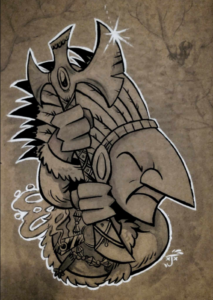
The Scene staff
In trying to create an empathetic society, we often swing from one extreme to another.
Discrimination remains rampant all over, with one example being cultural appropriation. It’s a legitimate problem, but we often forget that genetics can be unpredictable, and cultural appreciation also exists, leading to false assumptions.
And making assumptions can be dangerous, as expressed by Oscar Wilde: “When you assume, you make an ass out of you and me.”
So, what qualifies as cultural appropriation? One dictionary defines it as “the problematic adoption of elements from another culture.”
In other words, when members of a dominant culture take from minorities, it becomes controversial.
This issue is prevalent among sports teams and trends that use tribal names, imagery and religious symbols as mascots or fashion, dismissing their cultural significance and status.
G.E. Loveless, a nonbinary person and proud member of the BIPOC (black, indigenous and people of color) community, describes the difference between cultural appreciation and cultural appropriation in this way:

style of characters with exaggerated features.
“Appreciation is when someone seeks to understand and learn about another culture in an effort to broaden their perspective and connect with others cross-culturally, whereas appropriation is simply taking, adopting or ‘cherry-picking’ one aspect of a culture that is not your own and using it for your own personal interest.”
So, while cultural appropriation can be a societal problem, and people should be held accountable for their actions, not everything warrants the same backlash.
Overreactions can have serious consequences. They occur when people lack the necessary context or historical understanding of a situation and respond with disproportionate outrage.
In such cases, the “wrongdoers” become victims themselves, facing bullying, harassment and sometimes assault, which can have devastating effects on their lives.
The groups that engage in this behavior are commonly known as “social justice warriors.” They are driven by a strong sense of moral righteousness under the guise of protecting others from harm.
But their actions can be counterproductive, causing more harm than good by discouraging open dialogue and critical thinking.
I’ll give an example of something that happened to me not too long ago, when I was hanging out at the Galleria Mall with my then-friend, discussing tarot.
He stated that practicing it was considered appropriation and tried to convince me that I was in the wrong. His reasoning was that a young Romani woman on TikTok said it was a closed practice.
But despite what she said, there’s evidence of tarot dating back to ancient China. The cards made their way westward through various groups of people between the 13th and 16th centuries.
During the Middle Ages, tarot underwent a transformation, becoming a popular game among European aristocrats before regaining its occult associations in the 1700s. Since then, the cards have been used for divination and spiritual purposes, but they are far different than what they were originally.
So, while the history of tarot is complex, to call it a closed practice would be wildly misinformational, if not misleading.
In other words, it’s important to note that no single group can claim full ownership of tarot in today’s context, as it’s been influenced by a wide range of cultures and traditions. Because of that, there are many different ways to read the cards.
Here’s another example involving my husband:
During Inktober, an annual online challenge for artists in October, Jimmy was given a drawing prompt labeled “tomahawk,” and he created a drawing of a traditional Native American chief wielding the weapon.
Months later, somebody falsely accused Jimmy of deliberately appropriating Native Americans in his artwork while also claiming the depiction of the chief’s nose was racist, associating it with discriminatory imagery they’d seen in the past.
Jimmy responded by apologizing for any perceived offense and did his best to clarify that his intention was not to stereotype or insult Native Americans. He explained that his style involves exaggerating features to the point of absurdity, and that he, too, is part Native.
Rather than make hasty judgments, we should strive to embrace diversity and engage in meaningful cultural exchange.
By respectfully incorporating elements from other cultures through learning and understanding, confrontations like these can be avoided. We can create a more inclusive community, where people coexist and appreciate each other’s cultures without falling to the other extreme.
